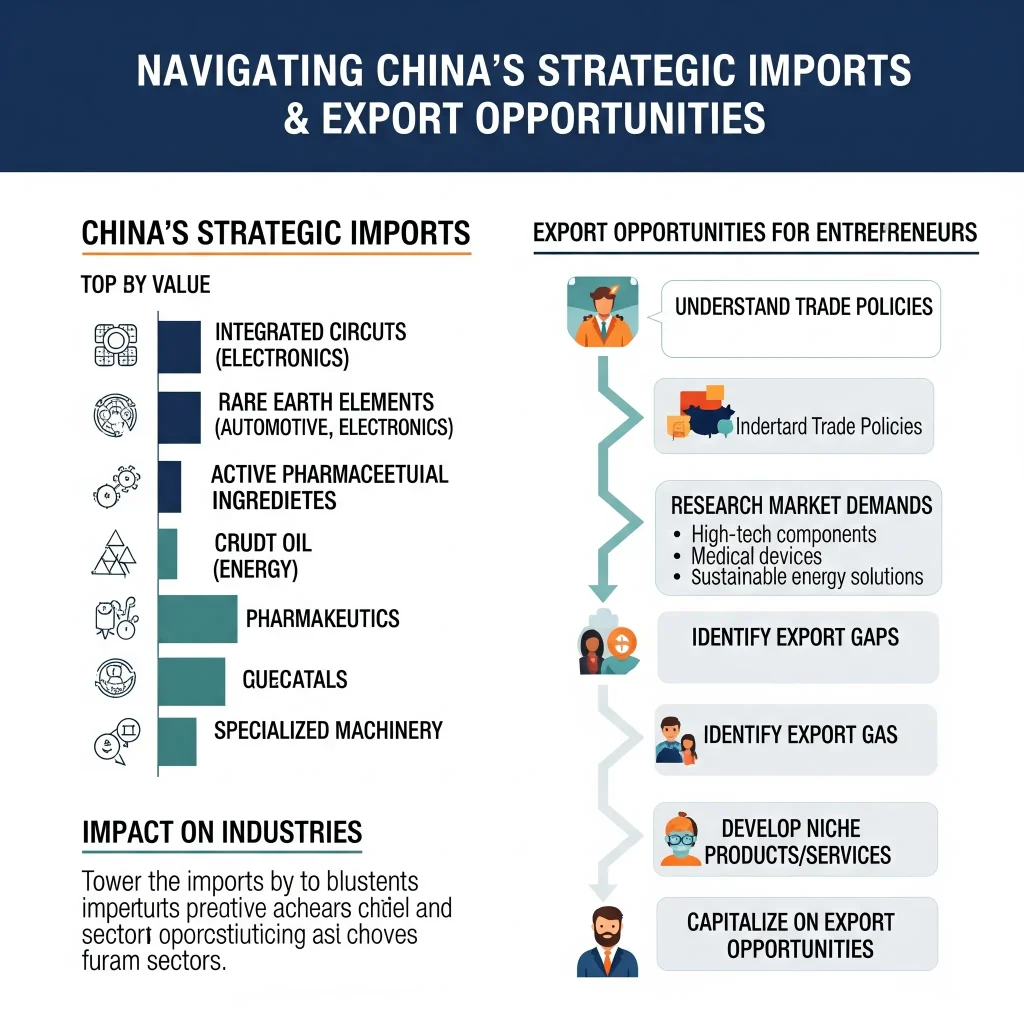China has become one of the largest importers and consumers of global goods, showcasing its role as a major economic force. While it is known for its manufacturing and export strength, China also imports a wide variety of items to fulfill domestic demand, support industrial growth, and improve technological capabilities. Understanding China’s imports matters for entrepreneurs, exporters, and business owners looking to enter one of the world’s largest markets.
Niir Project Consultancy Services (NPCS) assists entrepreneurs by providing Market Survey cum Detailed Techno-Economic Feasibility Reports. These reports offer comprehensive information on market demand, product specifications, supply chain details, and operational feasibility, helping businesses find profitable export opportunities in China.
Detailed project report
Overview of China’s Import Market

China is the second-largest economy globally. Its import patterns reflect its industrial growth, urbanization, and technological progress. The country imports products to supplement domestic production, support manufacturing, and meet rising consumer demand. Key import categories include raw materials, intermediate goods, machinery, equipment, chemicals, agricultural products, and high-tech components.
Strategic imports allow China to compete in industries like electronics, automotive, pharmaceuticals, and energy. Entrepreneurs need to grasp these policies, trade agreements, and market demands to effectively navigate the import landscape and spot viable export opportunities.
To explore more, check our books.
Major Items Imported by China
Raw Materials and Minerals
China brings in large amounts of raw materials and minerals to fuel its extensive industrial sector. Iron ore, copper, aluminum, and other metals are crucial for making steel, automobiles, machinery, and construction materials. Despite being a manufacturing leader, domestic mineral production does not fully meet the country’s industrial needs.
Energy Resources
Energy imports play a vital role in China’s economic plan. Crude oil, natural gas, and coal are brought in to power industrial production, electricity generation, and transportation. As the nation seeks energy security and diversification, it maintains a strong demand for resources from countries rich in energy.
Machinery and Industrial Equipment
China imports high-precision machinery, industrial equipment, and specialized tools to boost manufacturing efficiency. This includes machine tools, automation equipment, robotics, and production-line machinery.
Electronics and Technology Components
The electronics sector depends on imports of semiconductors, integrated circuits, and electronic components. These parts are essential for manufacturing smartphones, computers, consumer electronics, and industrial devices.
Agricultural Products and Food Items
China’s growing population and urbanization have led to a higher demand for imported food and agricultural products. Items such as soybeans, grains, meat, dairy products, and edible oils are brought in to meet domestic consumption needs.
Chemicals and Pharmaceuticals
The chemical industry relies on imported raw chemicals, specialty chemicals, and pharmaceutical intermediates to support manufacturing and healthcare. Chemicals for plastics, paints, fertilizers, and industrial uses are imported in large quantities.
Luxury Goods and Consumer Products
China is an expanding market for luxury goods, fashion items, cosmetics, and branded products. Imported luxury items, such as watches, perfumes, designer clothing, and accessories, appeal to the growing middle and upper classes.
Trends Influencing China’s Imports
Numerous trends shape China’s import patterns and create opportunities for global entrepreneurs. Industrial modernization, consumer demand, sustainability, and sourcing practices impact the types and amounts of goods imported.
Opportunities for Entrepreneurs
Entrepreneurs can look into exporting raw materials, industrial equipment, technology components, or high-quality consumer products. Identifying gaps in domestic production, targeting niche sectors, and adhering to quality and regulatory standards are essential strategies. Utilizing NPCS Market Survey cum Detailed Techno-Economic Feasibility Reports helps assess demand trends, supply chains, and operational feasibility.
Challenges and Considerations
Challenges include meeting regulatory requirements, tariffs, quality standards, logistics, and competition from other global exporters. Entrepreneurs need to ensure product quality, maintain efficient supply chains, and understand the local market to succeed.
Strategic Recommendations for Entrepreneurs
Identify products with high demand and limited domestic production. Build strong supply chains, stay updated on regulatory requirements, use digital tools, and take advantage of advisory services like NPCS for strategic guidance.
Related articles:- 8 Best Manufacturing Businesses to Start: Market Outlook & Growth
Future Outlook
China’s import market is likely to keep growing, driven by industrial expansion, technological progress, and increased consumer demand. Entrepreneurs offering high-quality raw materials, industrial machinery, technology components, agricultural products, and premium consumer goods can capitalize on this growth.
Conclusion
China’s import landscape mirrors the country’s industrial, technological, and consumer-focused growth. From raw materials and machinery to agricultural products, chemicals, and luxury goods, the import market presents diverse opportunities for entrepreneurs and exporters around the world.
Niir Project Consultancy Services (NPCS) provides detailed Market Survey cum Detailed Techno-Economic Feasibility Reports to help businesses evaluate market potential, sourcing strategies, and operational feasibility. By adopting a research-driven and compliant approach, entrepreneurs can take advantage of China’s import market to achieve sustainable growth and profitability.
Discover the best business ideas for yourself using our startup selector tools
Frequently Asked Questions
Why does China import so many products despite being a manufacturing hub?
Domestic production cannot fully meet the massive demand for raw materials, energy, food, and technology components.
What are China’s top imports?
Iron ore, crude oil, natural gas, semiconductors, agricultural products, chemicals, pharmaceuticals, and luxury goods are among the top imports.
How do these imports create opportunities for entrepreneurs?
Exporters can target niche gaps in raw materials, industrial machinery, and consumer goods to enter the Chinese market.
What challenges exist for exporting to China?
Regulatory compliance, tariffs, logistics, and competition from other global exporters are significant challenges.
How can entrepreneurs plan for exporting to China?
NPCS reports provide insights into demand patterns, supply chain strategies, and feasibility analysis for exporting products






